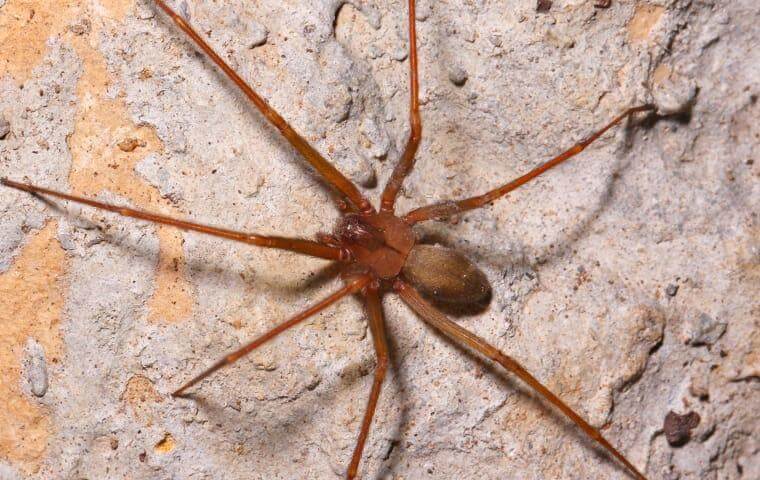Have you ever come across a spider and wondered if it was dangerous? For most people, the uncertainty about which spiders are dangerous and which ones are not, causes them to fear spiders that couldn’t hurt a fly—well, maybe a fly, but never a human. Today we will be talking about some ways you can identify the well-known brown recluse spider, one of three spiders here in San Antonio with harmful venom, alongside the black widow and Chilean recluse.

Brown Recluse Identification
Also known as fiddle-back spiders, the brown recluse can be partly identified by its yellowish-brown body and dark brown violin-shaped marking with the base starting from the head and neck pointing towards its hindquarters. Baby brown recluse spiders, however, do not have this marking but will acquire it as they mature into adulthood. This characteristic alone is not a definite sign that the spider you are looking at is a brown recluse, as many other spiders have been mistaken to have violin-shaped body marks as well. The only way to honestly know a brown recluse from other spiders is to look at its eyes—a brown recluse only has six, not eight. The issue is that getting close enough to see the eyes can be dangerous. For this reason, your best option when you see a yellowish-brown spider with a potential violin on their back is to avoid it. Better safe than sorry.
Where Do Brown Recluse Hide?
When the brown recluse gets into homes, they do not weave webs to catch their prey. Instead, they hunt from the ground hiding in cracks and crevasses. Anywhere that has tight, dry, and undisturbed places may be shielding these dangerous arachnids. Common hiding places for the brown recluse include.
- Woodpiles
- Sheds
- Garages
- Closets
- Storage Areas
Prevention Steps For A Brown Recluse
Looking for a way to keep dangerous spiders out of your house? Consider the following tips to keep your home spider-free this fall and winter.
- Clear out hiding spots by tidying up storage areas around your home.
- Seal cracks and gaps in your home’s foundation using a caulking gun.
- Install door sweeps on all exterior doors.
- Make sure all of your screens are in good working order.
- Consider replacing exterior lights with insect repellent bulbs.
How To Keep Your Home Spider Free For Good
Although the brown recluse is not an aggressive spider and doesn’t bite unless threatened, it is still an unwelcome addition to your home. To keep spiders like the brown recluse out of your house, let the professionals here at Family Pest Control help. Our general pest control plans are designed to keep your home not only brown recluse free, but pest-free as well.
